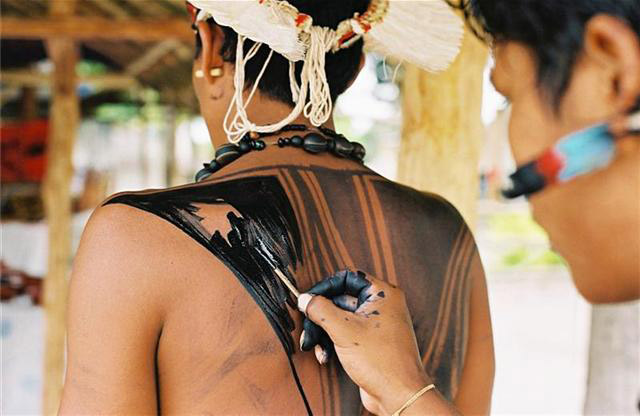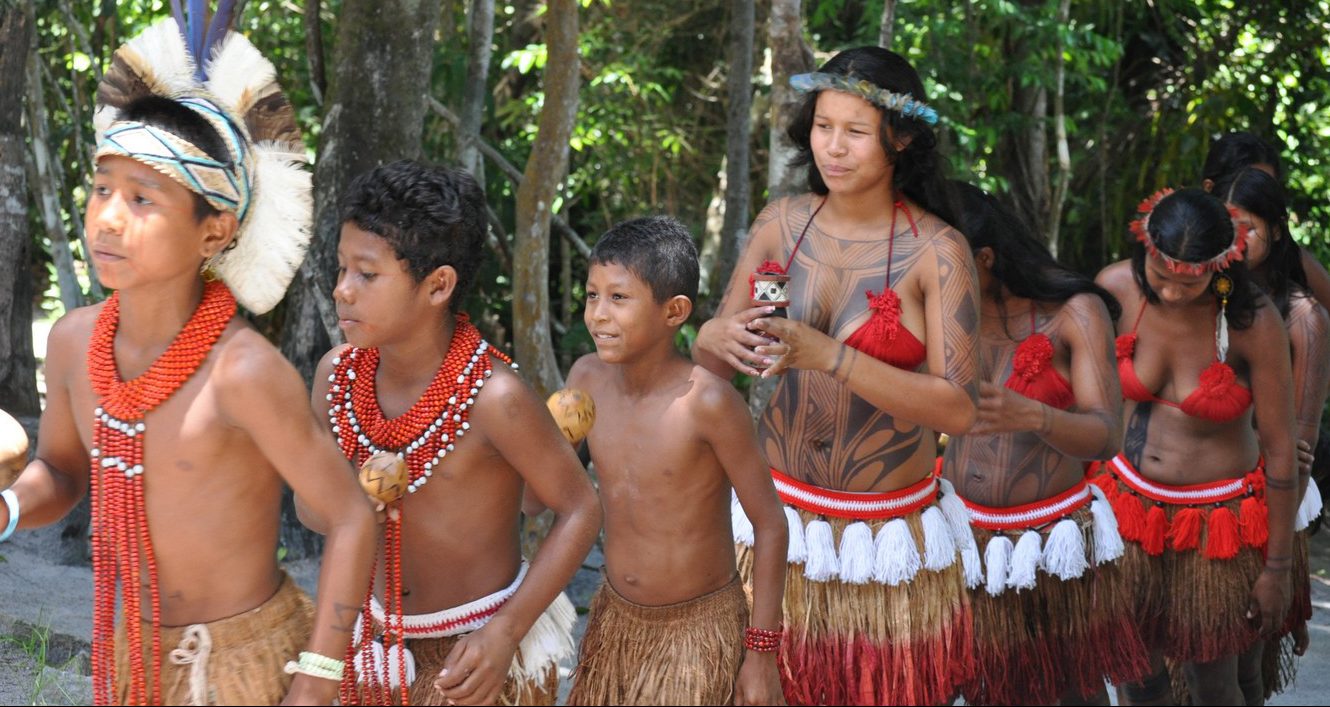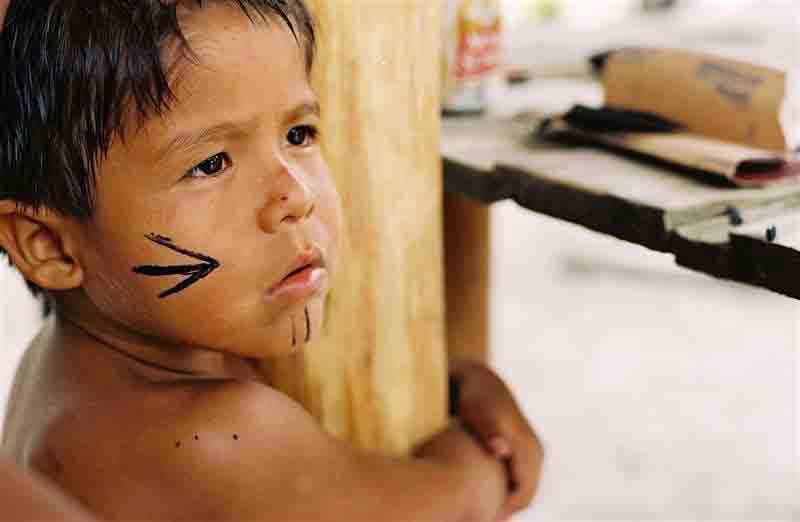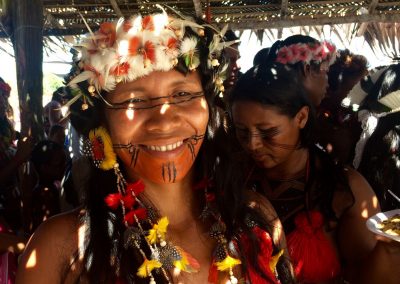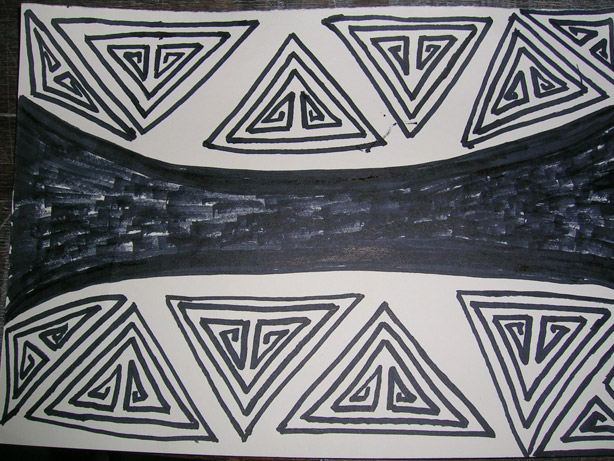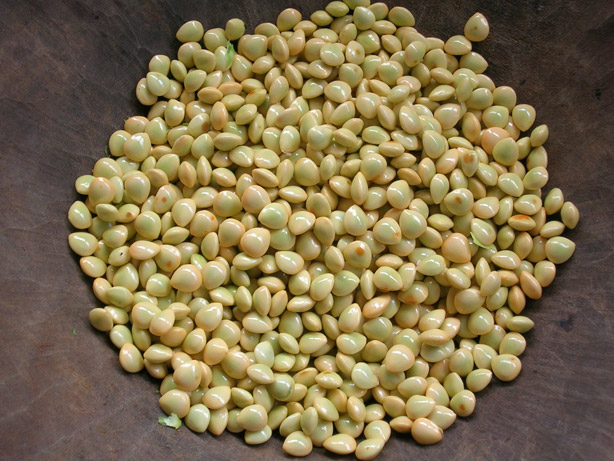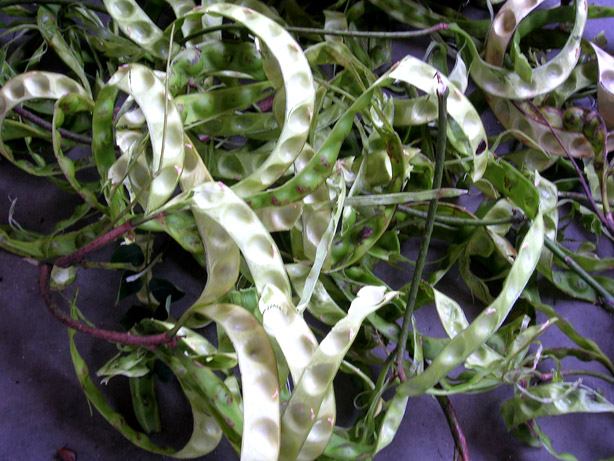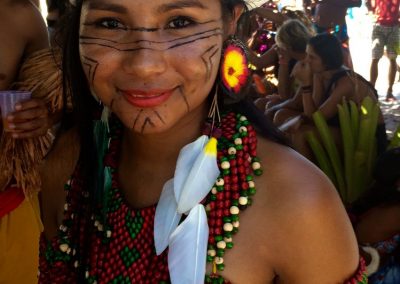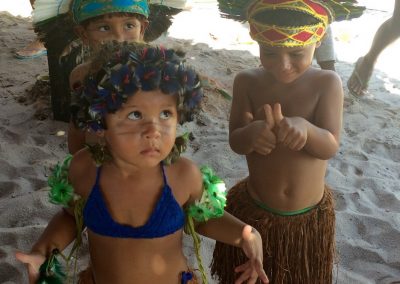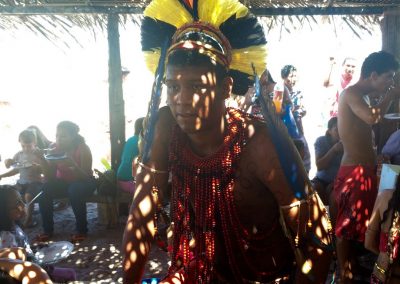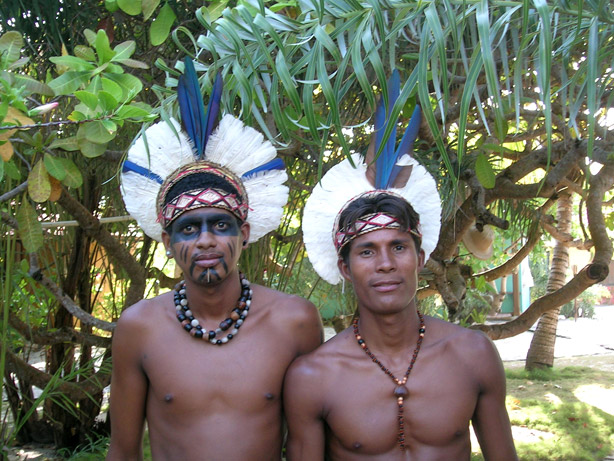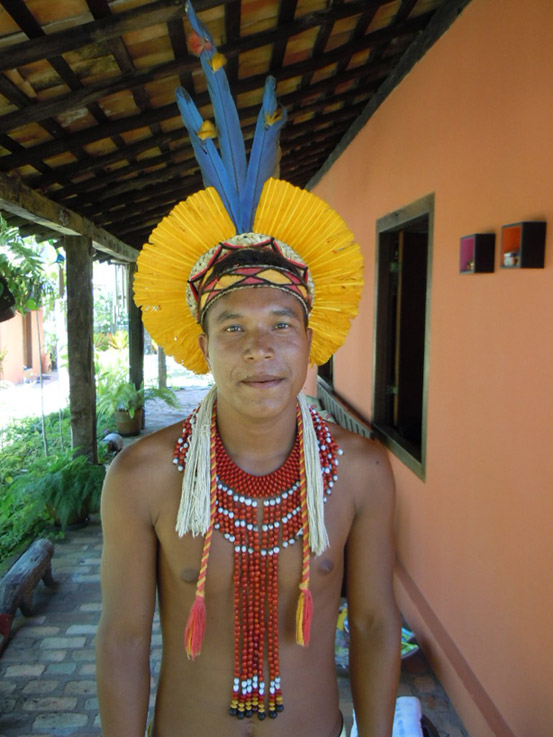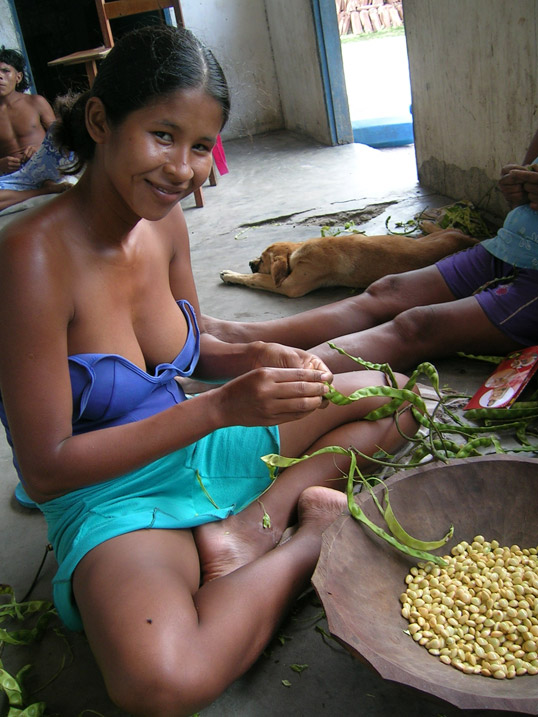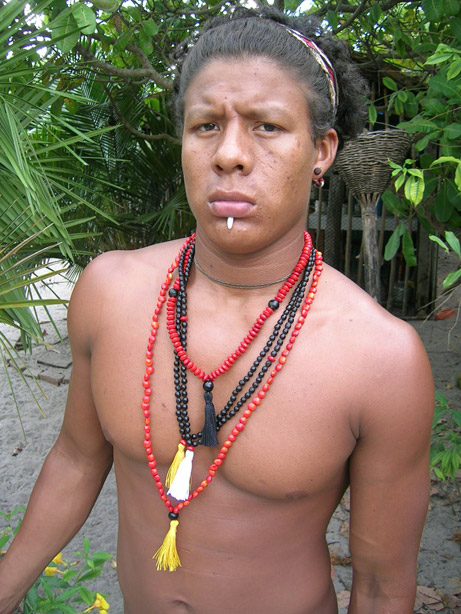Pataxó Village
Caraiva is located at the Northern gateway to the Monte Pascoal National Park and the Pataxó Indian Reservation.
At 6 km South of Caraiva is the Barra Velha village, where approximately 500 Pataxós families live.
There are schools, a health post and several other facilities in the village.
The flour manufacturing mode is preserved, made as it was during the discovery times and, together with the handicrafts, becomes a large part of the Pataxós income.
At the Cultural Center of Indigenous Traditions, which is located going up the river, you can learn a little more about the culture of the Pataxós Indians.
Dancings, cooking and stories told by the Pataxós themselves are an extra attraction.
The handcraft made by the Pataxós is more than an income alternative, it is a representation of their culture and belief.
The diversity of colors and shapes delights everyone.
These are necklaces, bracelets, hairpins, farininhas , bowls, spoons and other utensils made of wood, bird feathers, fibers and local seeds.
Paraju, a dark red, brownish wood, is used for household items, which draws attention by the careful notch..
Women’s necklaces, bracelets and adornments, made with Rosewood, Jacanaiba, Maçaranduba and other seeds from the region, are extremely beautifull.
In addition to the traditional wooden birds with colorful feathers, which are a great reminder of the place.
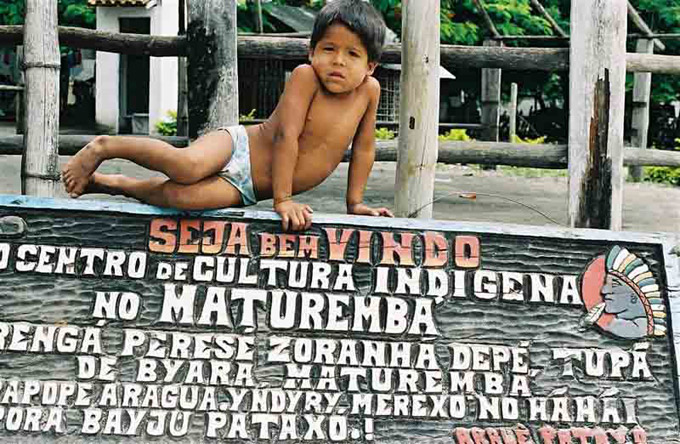
All handicrafts are produced with renewable raw material, they guarantee income and better living conditions for the families.
The necklace for the Pataxó people represents a protection, they believe that the seeds and the natural materials used pass power from mother nature’s energy.
Know some words in Pataxó language:
Cacuçu: man.
Jokana: woman.
Jokana Baixu: pretty woman.
Kitoke: kid.
Kitokere: girl.
Tiaua: parrot.
Tamicuâm: star.
Caiminuan, cauim: fermented drink made from cassava.



